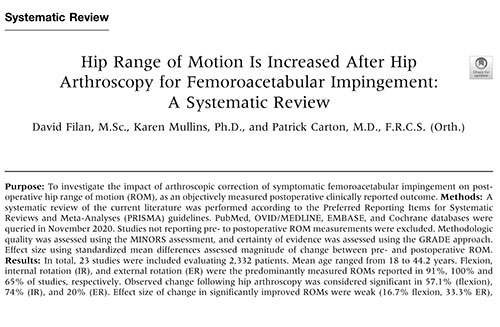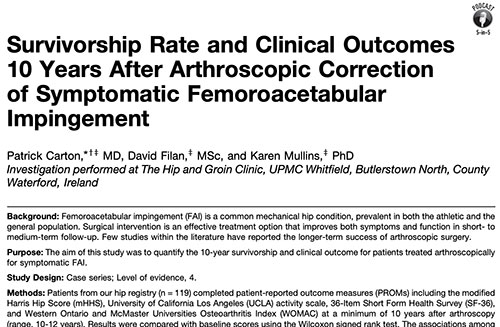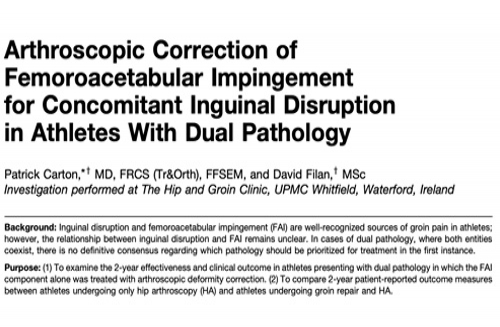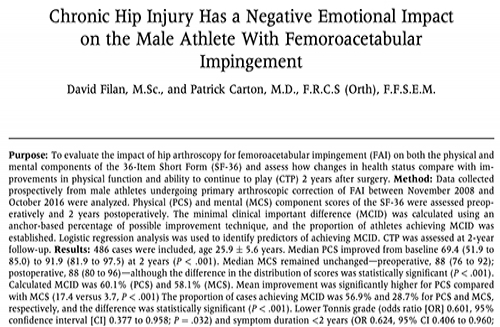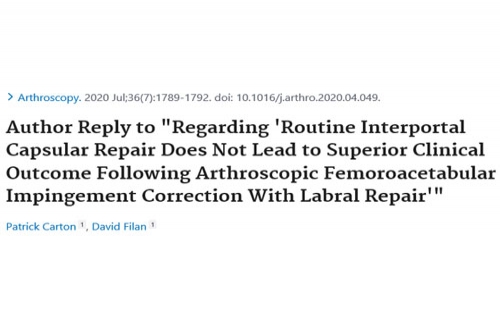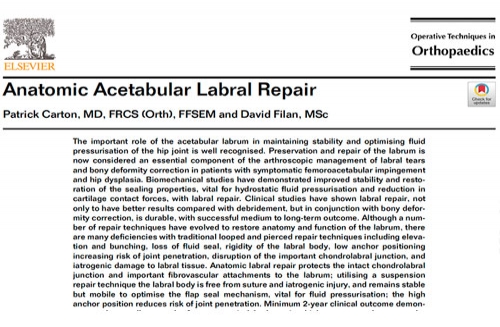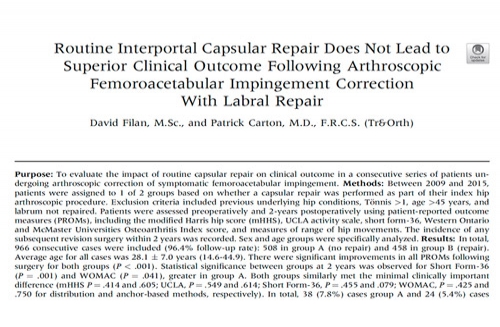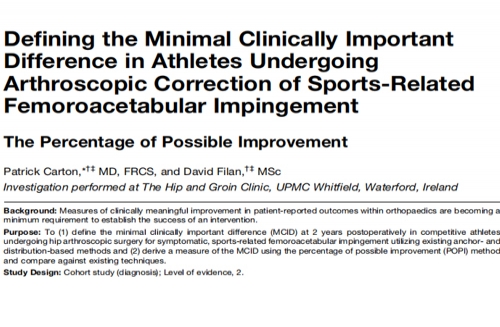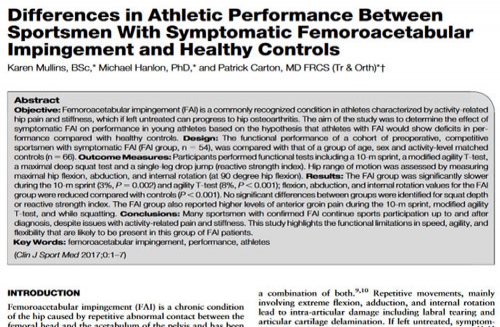Recent Publications
Hip Range of Motion Is Increased After Hip Arthroscopy for Femoroacetabular Impingement: A Systematic Review
It is generally accepted that decreased motion in patients with symptomatic FAI occurs primarily because of a mechanical block to movement from abnormal bony morphology of the proximal femur and/or acetabulum. Read More
Survivorship Rate and Clinical Outcomes 10 Years After Arthroscopic Correction of Symptomatic Femoroacetabular Impingement
In this study, 119 cases undergoing hip arthroscopy for femoroacetabular impingement (FAI) were followed-up 10 years post-surgery (range 10-12 years). Long-term patient-reported outcomes, satisfaction and incidence of subsequent surgeries are reported. Read More
Arthroscopic Correction of Femoroacetabular Impingement for Concomitant Inguinal Disruption in Athletes With Dual Pathology
Inguinal disruption and femoroacetabular impingement (FAI) are well-recognized sources of groin pain in athletes. In this study of patients with dual pathology, treatment of the FAI component alone using arthroscopic hip surgery results in a successful outcome without need for groin repair in 89.2% of cases... Read More
Arthroscopic Correction of Sports-Related Femoroacetabular Impingement in Competitive Athletes
Athletes undergoing arthroscopy for sports-related FAI can expect a successful outcome and continued sports participation at 2 years postoperatively. In this study significant improvements for all patient-reported outcome measures were observed with 84% of athletes continuing to play at 2 year follow-up.... Read More
Chronic Hip Injury Has a Negative Emotional Impact On the Male Athlete With Femoroacetabular Impingement
Arthroscopic management of sports-related FAI results in excellent overall clinical outcome and high levels of satisfaction and CTP, at 2-years. Chronic hip injury has a significant negative effect on the physical and mental well-being of athletes; corrective surgery may restore physical function but is.. Read More
Routine Interportal Capsular Repair
In this Letter to the Editor response, we address the patient reported outcome measures utilised in this study, our results which are specific to clinical outcomes following repair of an interportal capsulotomy and the relevance of this as compared to trends currently available within the literature. Read More
Anatomic Acetabular Labral Repair
Anatomic labral repair involves protecting the important chondrolabral interface and vascular network during labral takedown and acetabuloplasty, and utilising a suspension-type repair to re-fix the labrum to the acetabular rim. Read More
Routine Interportal Capsular Repair Does Not Lead to Superior Clinical Outcome Following Arthroscopic Femoroacetabular Impingement Correction
While significant improvements at 2 years post-op were observed overall, when evaluating a consecutive series of patients undergoing hip arthroscopy for femoroacetabular impingement, routine capsular repair did not lead to significantly superior outcomes compared with a non-repair group Read More
Defining the Minimal Clinically Important Difference in Athletes Undergoing Arthroscopic Correction of Sports-Related Femoroacetabular Impingement
Measures of clinically meaningful improvement in patient-reported outcomes within orthopaedics are becoming aminimum requirement to establish the success of an intervention. Read More
Differences in Athletic Performance Between Sportsmen With Symptomatic Femoroacetabular Impingement and Healthy Controls
Femoroacetabular impingement (FAI) is a commonly recognized condition in athletes characterized by activity-related hip pain and stiffness, which if left untreated can progress to hip osteoarthritis. Read More

